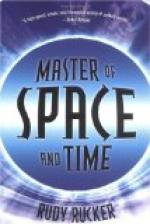The early telephones were operated with a single wire grounded at either end, the earth return being used to complete the circuit as with the telegraph. But while the currents used to operate the telegraph are fairly strong and so can dominate the earth currents, the tiny currents which represented the vibrations of the human voice were all too often drowned by the earth currents which strayed on to the lines. Telephone engineers were not then agreed that this caused the difficulty; but they did know there was difficulty. Many weird noises played over the lines and as often as not the spoken word was twisted into the strangest gibberish and rendered unintelligible. If the telephone was to satisfy its patrons and prove of real service to the world, the difficulty had to be overcome. Some of the more progressive engineers insisted that a double-wire system without a ground was necessary. This, of course, involved tremendous expenses in rebuilding every line and duplicating every wire. The more conservative hesitated, but Carty forged ahead.
In 1880 he was engaged in operating a new line out of Boston. He was convinced that the double-wire system alone could be successful, and he arranged to operate a line on this plan. Taking two single lines, he instructed the operator at the other end to join them, forming a two-wire circuit. The results justified him. At last a line had been attained which could be depended upon to carry the conversation.
No sooner was one problem solved than another presented itself. What to do with the constantly increasing number of wires was a pressing difficulty. All telephone circuits had been strung overhead, and with the demand for telephones for office and residence rapidly increasing, the streets of the great cities were becoming a perfect forest of telephone poles, with the sky obscured by a maze of wires. Poles were constantly increased in height until a line was strung along Wall Street in New York City at a height of ninety feet. From the poles the wires overflowed to the housetops, increasing the difficulty of the engineers. How to protect the wires so that they could be placed underground was the problem.
We have noticed that Theodore Vail had been brought to the head of the Bell system in its infancy and had led the fight against the rival companies until it was thoroughly established. Now he was directing his genius and executive ability to so improving the telephone that it should serve every need of communication. While the engineers discussed theories Vail began actual tests. A trench five miles long was dug beside a railway track by the simple expedient of hitching a plow to a locomotive. In this trench were laid a number of wires, each with a different covering. The gutta-percha and the rubber coverings which had been used in cable construction predominated. It was found that these wires would carry the telephone currents, not as well as might be desired, but well enough to assure Vail that he was on the right track. The companies began to place their wires underground, and Vail saw to it that the experiments with coverings for telephone wires were continued. The result was the successful underground cables in use to-day.




